The large video screen technology
[su_row][/su_row] [su_row][su_column size=”1/2″]The SUPERVISION team is mobilised to explain the essential part of the large video screen technology and to provide you with a glossary including more detailed information about our screens.[/su_column][su_column size=”1/2″]We expect all these insights combined will help you better understand the various technical terminologies and improve the management of your projects according to your expectations.
[/su_column] [/su_row] [su_row][/su_row] [su_row]
[/su_column][/su_row] [su_row][/su_row] [su_row][/su_row]
Types of large LED screens
[su_row][/su_row] [su_row] [su_column size=”1/2″]SMD LED screen
The SMD technology consists of packaging 3 color chips (red, green, blue) in 1 lamp.
Enhanced contrast levels and improved contrast/brightness ratio (especially in Full Black), greater color accuracy, outstanding resolutions are the salient features of the SMD technology which is used in most of our screens : LM11, LM15, LM17, LMB46, M5.8 …
Coupled with the CREE LED, the SMD technology has made of the brand new M5.8 one of the market’s top performing screens.
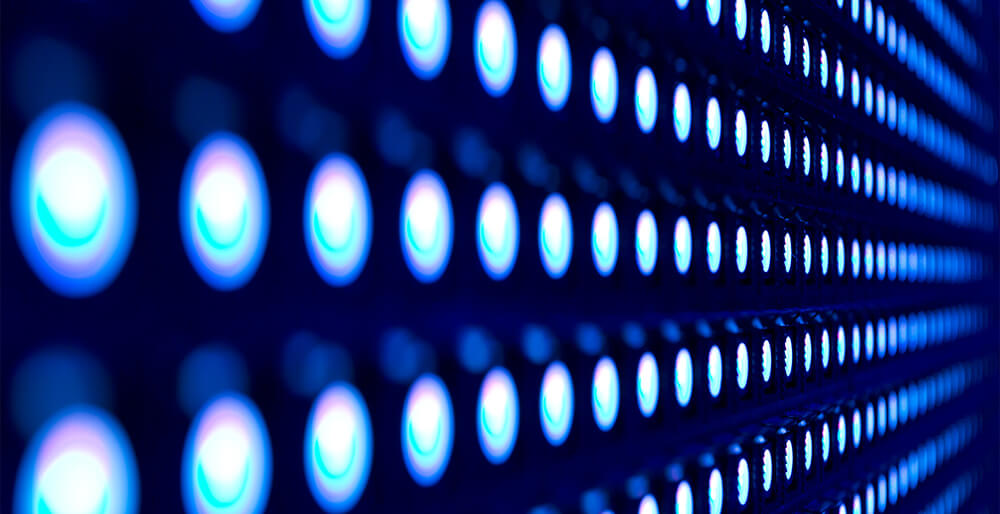 [/su_column]
[/su_row]
[su_row][/su_row]
[su_row][/su_row]
[su_row][su_column size=”1/2″]
[/su_column]
[/su_row]
[su_row][/su_row]
[su_row][/su_row]
[su_row][su_column size=”1/2″]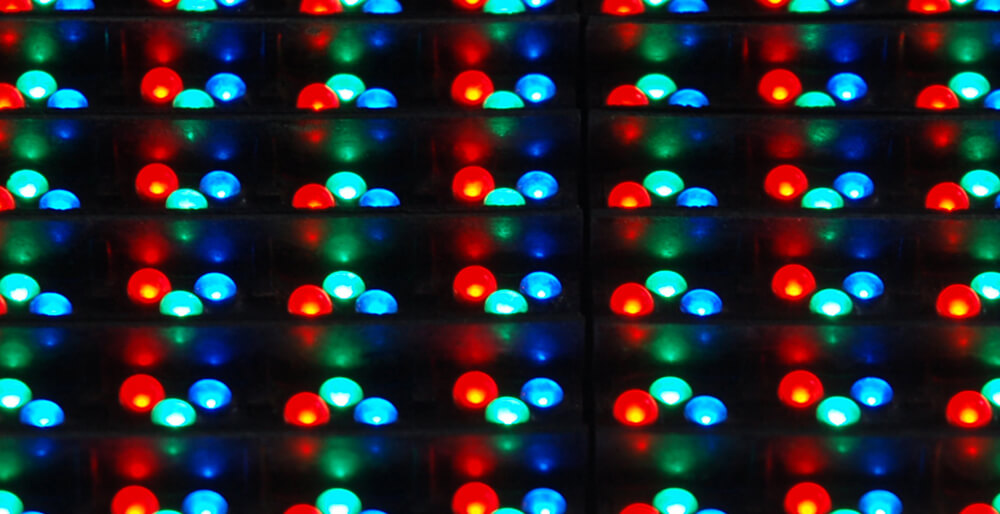 [/su_column][su_column size=”1/2″]
[/su_column][su_column size=”1/2″]DIP LED screen
Most DIP screens have a separate LED (R, G, B) for each of the three main colours: Red, Green, and Blue. But the disadvantage is the pixel diameter can’t be too small.
DIP LED technology is virtually no longer applied to the our screens nowadays.
Pixel
[su_row][su_column size=”1/2″]Each pixel is made up of a cluster of LEDs : a red, a green and a blue.
The color of a pixel can be stored by using a combination of those LEDs.
Pixel pitch
[su_row][su_column size=”1/2″]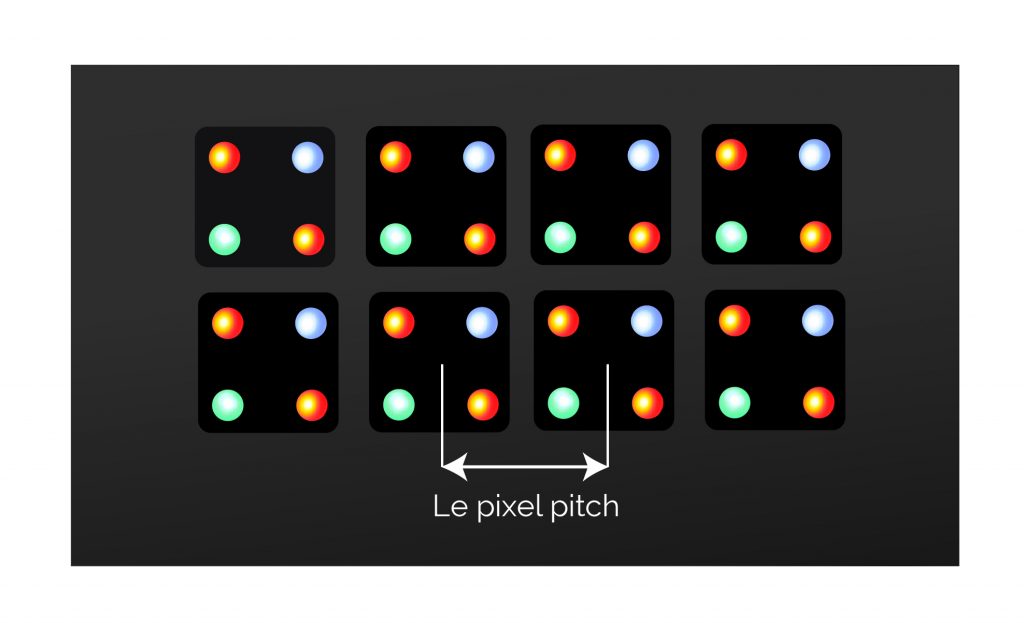 [/su_column]
[su_column size=”1/3″]
[/su_column]
[su_column size=”1/3″]It will determine the screen resolution.
Thus, the pixel pitch constitutes a primary criterion for selecting giant screens.
The lower the pitch, the higher the resolution.
And the higher the resolution, the lower may be the distance from the screen.
Generally speaking, the outdoor screens have a larger pixel pitch as the distance between the screen and the closest viewer is higher.
Real vs virtual pixel pitch
[su_row][su_column size=”1/2″]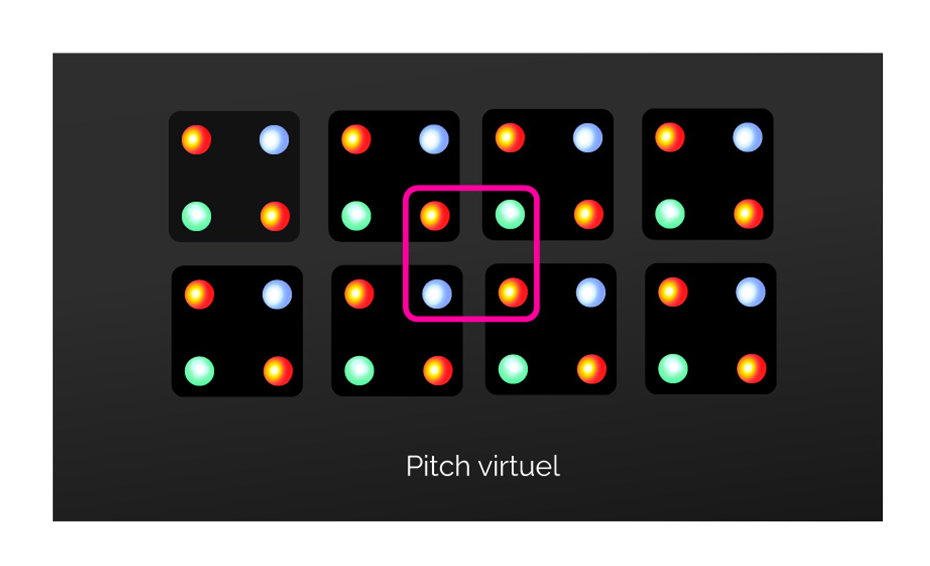 [/su_column]
[su_column size=”1/3″]
[/su_column]
[su_column size=”1/3″]■ Real pixel technology (1R1G1B – 1red, 1green and 1 blue LED) : each LED works independently.
■ Virtual pixel technology (2R,1G,1B – 2 reds, 1green and 1blue LED) and each LED is shared by the neighboring 4 pixels at the same time.
Virtual pixel pitch has consequently less LEDs / sqm. Image quality can be adversely affected : low brightness level, display flickering, and other troublesome visual effects.
The virtual pixel configuration remains mostly used with large, fixed installations such as our LM103. Mind that contents need to be adjusted using animated videos.
A virtual pixel configuration will offer cost benefits but will create an image that has compromised quality.
Screen resolution
[su_row][/su_row] [su_row][su_column size=”1/2″]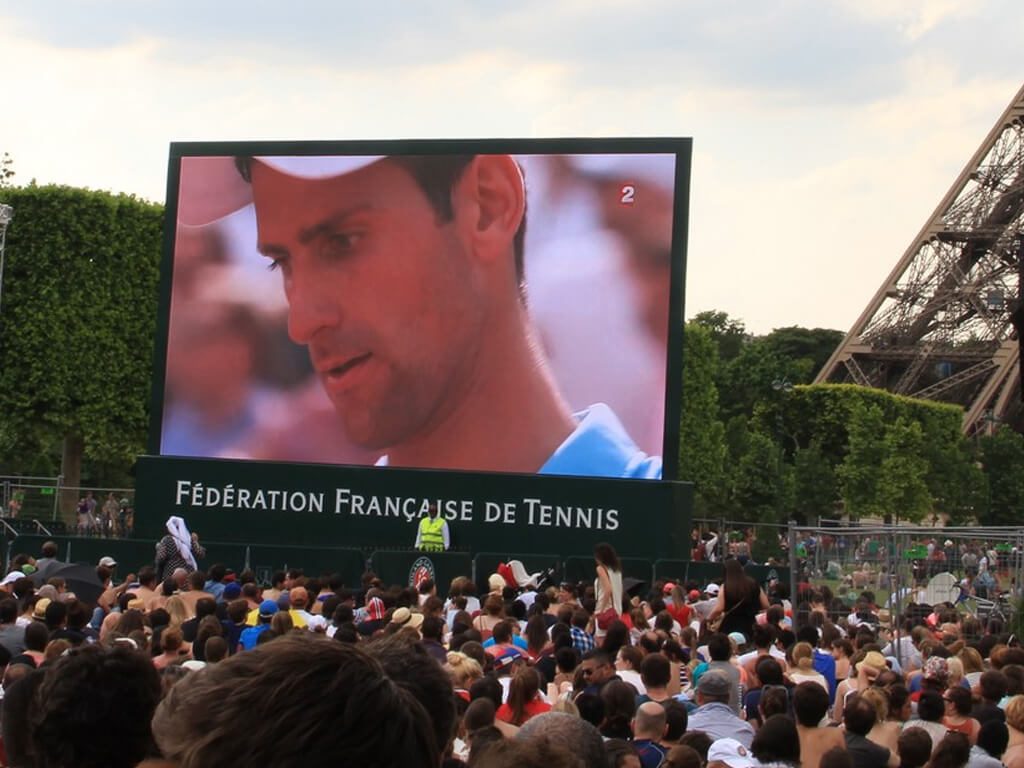 [/su_column]
[su_column size=”1/2″]
[/su_column]
[su_column size=”1/2″]The increase of the resolution reduces the readibility distance* of a LED giant screen.
The combination of the following parameters « minimum distance**/ maximum distance*** – resolution » determines the appropriate screen size according to your configuration.
* Readibility distance: distance between the audience and the giant screen.
** Minimum distance : distance between the closest spectator and the giant screen.
*** Maximum distance : distance between the farthest spectator and the giant screen.
What content can be broadcasted on a large screen ?
[su_row][su_column size=”1/2″]Our screens are increasingly required to broadcast contents like Social Wall (Facebook, Instagram, Twitter…).
The image sources include direct TV, video recording on site, advertising spots but also any contents from a DVD, Blu-ray, PC, hard drive …
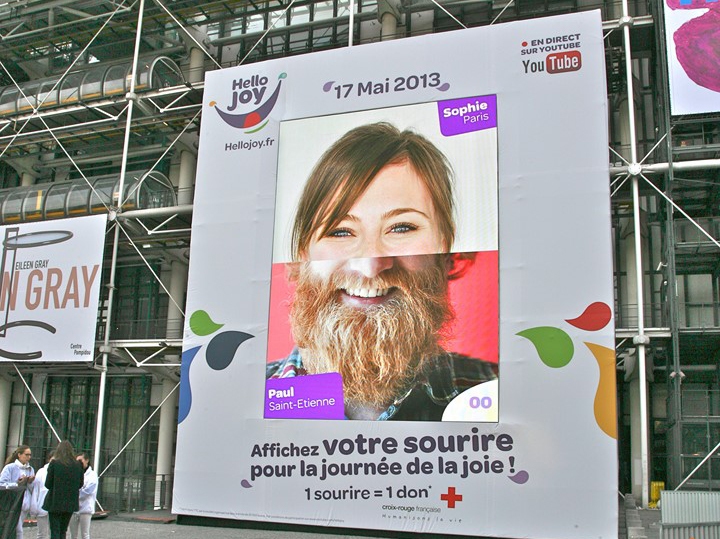 [/su_column][/su_row]
[su_row][/su_row]
[su_row][/su_row]
[/su_column][/su_row]
[su_row][/su_row]
[su_row][/su_row]What power supply is needed ?
[su_row][su_column size=”1/2″]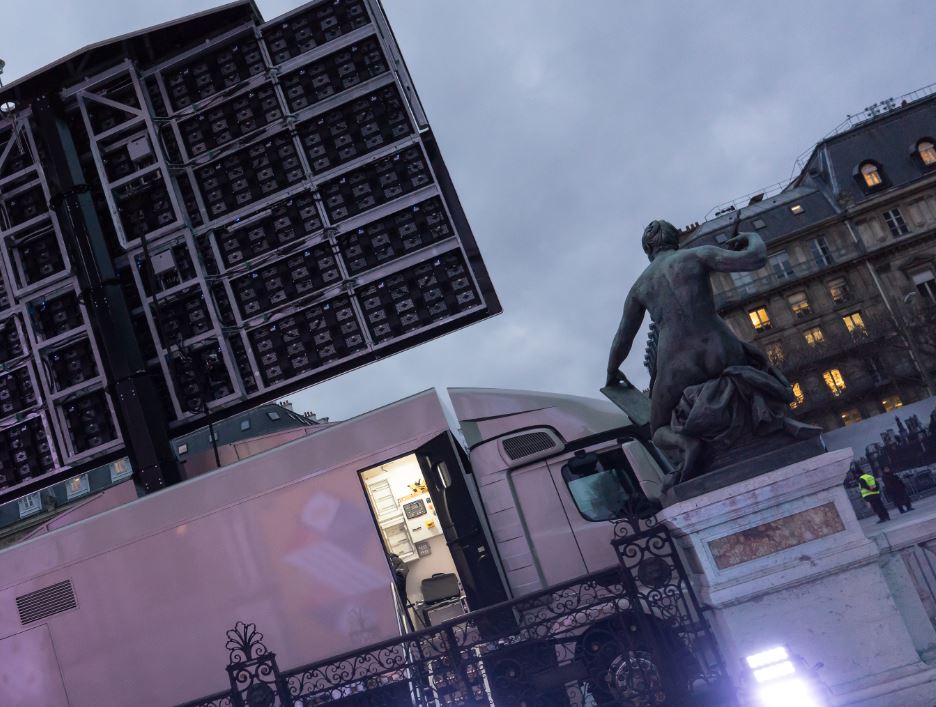 [/su_column]
[su_column size=”1/2″]
[/su_column]
[su_column size=”1/2″]SUPERVISION leaves a sufficient margin in terms of power supply in order to cater for unforeseeable events and to avoid any voltage decreases.
You can consult the specific product literature summarizing all technical details.
Electrical power is supplied primarily by:
■ The connection to the mains
■ A power generator
Our mobile screens operate with 100% autonomy.
To that end, they are either fitted with an integrated power generator (LM11, LMC30, LMB46, LMC50) or are towed by a motor vehicle equipped with a generator. This feature allows them to function completely independently.
